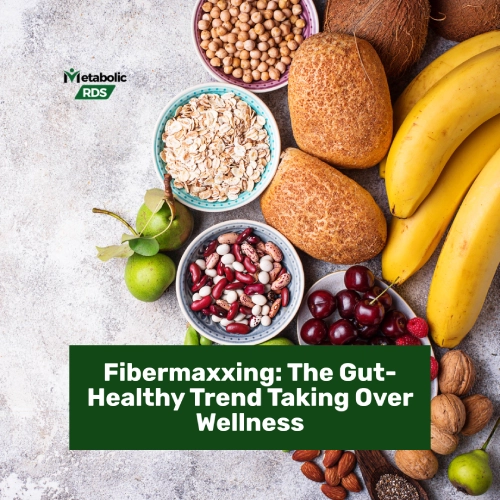By clicking “Accept All Cookies”, you agree to the storing of cookies on your device to enhance site navigation, analyze site usage, and assist in our marketing efforts. View our Privacy Policy for more information.
Safe and Healthy Cookware: Making Informed Choices for Your Kitchen
By ditching potentially toxic materials like Teflon, aluminum, and poorly-made ceramics, and opting for safer alternatives like cast iron, enamel-coated cast iron, glass, and stainless steel, you can cook with peace of mind.
By
June 3, 2024
.webp)
If you’ve ever stood in your kitchen, eyeing your pots and pans suspiciously, wondering if they’re secretly plotting against your health, you’re not alone.
When it comes to choosing cookware for your kitchen, it's essential to consider both the health implications and the long-term safety of the materials used. Many common cookware materials can pose health risks due to the chemicals and metals they release during cooking. In this post, we'll explore the potential hazards associated with some popular types of cookware and suggest safer alternatives.
Let's uncover which kitchen essentials might be more of a frenemy than a friend.
Problematic Cookware Materials
Non-stick (Teflon)
Non-stick cookware is a staple in many kitchens, thanks to its convenience. But those shiny Teflon surfaces come at a cost. Teflon contains polytetrafluoroethylene (PTFE), a chemical that makes your pans non-stick but has some serious health concerns. The Environmental Working Group (EWG) found links between PTFE exposure and obesity, thyroid issues, kidney, and testicular cancer. These pans can also release toxic fumes when overheated, which can be harmful to both humans and pets. So, while flipping pancakes is fun, consider the long-term implications (EWG, n.d.).
Aluminum
Aluminum is another popular choice because it’s cheap, lightweight and heats up quickly. However, aluminum can leach into food, especially when cooking acidic foods, and has been connected to neurological problems, autoimmune conditions, and Alzheimer's disease (Exley, 2014). While the body can handle small amounts of aluminum, chronic exposure is concerning. So, it might be time to reconsider wrapping your food in that shiny foil.
Copper
Copper is an essential trace mineral, but excessive exposure can lead to toxicity. While, copper cookware looks stunning and heats evenly, but over time, it can release copper into your food. While we need a small amount of copper in our diet, too much can mess with your zinc levels, affecting immune and thyroid function (Gaetke & Chow, 2003). Stick to dietary sources for your copper intake instead of your pans.
Ceramics
Ceramic cookware can be hit or miss. High-quality ceramic cookware can be a safe option, but caution is needed. Mass-produced ceramics may contain lead or other heavy metals that can leach into food, especially if the glaze is damaged or worn. Testing your ceramic cookware with a lead check swab can help ensure its safety (EPA, 2020).
Safer Cookware Options
Bare Cast Iron
Cast iron is the superhero of non-toxic cookware. It's non-stick when seasoned correctly and can be used on both the stove-top and in the oven. Plus, it adds a small amount of iron to your food, which can be beneficial for those with iron deficiencies. However, those with conditions like hemochromatosis should use it sparingly (American Dietetic Association, 2005).
Enamel Coated Cast Iron
Think of enamel-coated cast iron as cast iron’s low-maintenance cousin.
Enamel-coated cast iron provides the benefits of cast iron without the need for seasoning and maintenance. The enamel coating prevents iron from leaching into food and offers a variety of design options. It is a bit pricier but requires less upkeep than bare cast iron (Bauer, 2019).
Glass
Glass cookware is a fantastic, non-toxic option that’s also budget-friendly. Brands like Pyrex offer durable solutions for cooking and food storage. It doesn’t retain flavors or odors and is easy to clean (FDA, 2017).
Stainless Steel
Stainless steel is another safe and durable cookware option. It’s non-toxic, resistant to rust and corrosion, and can last a lifetime with proper care. While it is not naturally non-stick, using enough oil can prevent food from sticking. Stainless steel is also relatively affordable compared to other non-toxic cookware options (National Institutes of Health, 2012).
Conclusion
Choosing the right cookware can make a big difference in your health. By ditching potentially toxic materials like Teflon, aluminum, and poorly-made ceramics, and opting for safer alternatives like cast iron, enamel-coated cast iron, glass, and stainless steel, you can cook with peace of mind. Remember, it’s not just about what you cook, but also what you cook it in.
References
- American Dietetic Association. (2005). Position of the American Dietetic Association: Health Implications of Dietary Fiber. Journal of the American Dietetic Association, 105(7), 1243-1255.
- Bauer, J. (2019). The Best Enamel Cookware. Consumer Reports. Retrieved from https://www.consumerreports.org/cro/news/2019/06/the-best-enamel-cookware/index.htm
- Environmental Protection Agency (EPA). (2020). Lead in Ceramic Cookware. Retrieved from https://www.epa.gov/lead/protect-your-family-exposures-lead#products
- Environmental Working Group (EWG). (n.d.). Non-stick Cookware and Your Health. Retrieved from https://www.ewg.org/consumer-guides/ewg-kitchen-guide
- Exley, C. (2014). What is the risk of aluminium as a neurotoxin? Expert Review of Neurotherapeutics, 14(6), 589-591. doi: 10.1586/14737175.2014.915738
- FDA. (2017). Glass Cookware Safety. Retrieved from https://www.fda.gov/food/food-safety-modernization-act/fsma-guidance-documents-industry
- Gaetke, L. M., & Chow, C. K. (2003). Copper toxicity, oxidative stress, and antioxidant nutrients. Toxicology, 189(1-2), 147-163.
- National Institutes of Health (NIH). (2012). Stainless Steel in Foodservice. Retrieved from https://www.nih.gov/news-events/news-releases/stainless-steel-foodservice





